This article was co-authored by Lyssandra Guerra. Lyssandra Guerra is a Certified Nutrition & Wellness Consultant and the Founder of Native Palms Nutrition based in Oakland, California. She has over five years of nutrition coaching experience and specializes in providing support to overcome digestive issues, food sensitivities, sugar cravings, and other related dilemmas. She received her holistic nutrition certification from the Bauman College: Holistic Nutrition and Culinary Arts in 2014.
There are 17 references cited in this article, which can be found at the bottom of the page.
wikiHow marks an article as reader-approved once it receives enough positive feedback. In this case, 100% of readers who voted found the article helpful, earning it our reader-approved status.
This article has been viewed 24,577 times.
Health conditions like celiac disease or a gluten sensitivity are chronic issues that can cause unpleasant GI symptoms like diarrhea, abdominal bloating and pain, and vomiting, as well as nutrient deficiencies, which cause bone loss, neuropathy, internal bleeding, disorders of the liver, gall bladder, spleen, and fertility problems.[1] If you have either of these conditions, the only way to manage and prevent symptoms from occurring is by following a strictly gluten-free diet. While there are many gluten-free products on the market, many of them are also packed with sugar, which can cause you to gain weight, and are low in fiber, nutrients, vitamins, and minerals. Instead, stick to fruits and vegetables, gluten-free whole grains, legumes, lean protein, nuts and seeds, low-fat dairy, and healthy fats.[2]
Steps
Losing Weight on a Gluten-Free Diet
-
1Talk to your doctor. If you are experiencing unwanted weight gain while following a prescribed gluten-free diet for celiac disease or a gluten sensitivity, it's important to talk to your doctor about safe and appropriate weight loss.
- Many times people with these chronic conditions experience weight loss when their conditions are not properly managed. This generally occurs from severe malabsorption of calories and other nutrients in addition to a fear of eating foods.[3]
- Once the condition has been managed and absorption has been restored to normal, it's natural to experience some weight gain and this may even be beneficial; however, too much weight gain or weight gain that puts you into an overweight BMI category is not beneficial.
- Talk to your doctor about how much weight loss would be appropriate for you and ask about what types of diets or eating plans will be safe and appropriate for your condition.
- Also consider talking to a registered dietitian. These nutrition professionals frequently specialize in celiac disease and other allergies and can help you manage your condition while losing weight. Ask your doctor for a referral or search online.
-
2Manage calories. Even with a condition like celiac or a gluten sensitivity, the best way to lose weight is to pay attention to your total calorie intake and decrease your calorie intake to help start weight loss.
- To lose weight safely, cut out about 500 calories a day. This is especially important if you've had previous unwanted weight loss with these conditions.[4]
- This will result in about a 1 to 2 pound weight loss each week.[5] You want to aim for this slow, more gradual weight loss to make sure you're eating enough nutrients to maintain a healthy body.
- Start by noting all the foods and drinks you consume in a typical day and figure out the total calories you're eating.
- Subtract 500 from this number to determine a new calorie goal that will help you lose weight. Do not consume less than 1,200 or you risk gallstones, extreme fatigue, and other side effects.
Advertisement -
3Fill up on lean protein and produce. Although it may seem like gluten is in a wide variety of foods — and it is — many foods are actually naturally gluten-free. Most protein, fruits and vegetables are nutritious and gluten-free.[6]
- Protein is essential for a well-balanced and lower-calorie diet. It helps fuel weight loss and keep you satisfied during the day.[7]
- Include one or two 3-4 oz servings of leaner protein per meal. Choose a variety of these naturally gluten-free protein sources: seafood, poultry, eggs, low-fat dairy, lean beef, beans and nuts.[8]
- Whole fruits and vegetables are also naturally gluten-free and are an important part of your weight loss diet. Aim for 5 to 9 servings daily to help you meet your minimum intake.[9] [10]
- Although whole, unprocessed and minimally processed protein, fruits and vegetables are usually 100% gluten-free, always double check. For example, frozen vegetables that come in a sauce or gravy may have gluten or pre-made salads may have gluten in the dressing.
-
4Go for 100% gluten-free whole grains. Having either celiac disease or a gluten sensitivity may have you thinking you can never have grains or foods made with grains. However, there are plenty of tasty options that can serve as gluten-free substitutes.
- Grains like wheat, barley and rye and their flours are not tolerated with celiac or a gluten sensitivity. In addition, foods made from these grains like bread, pastas, muffins, waffles, cereals, English muffins and wraps will also not be tolerated.
- However, there are grains that are naturally gluten-free and can be enjoyed worry free. Many of them are also 100% whole grain and offer more protein and fiber. Try quinoa, brown rice, millet, amaranth, gluten-free oats, corn, teff, nut flours and buckwheat.[11]
- If you're choosing to have one of these grains or a food made from them, make sure to measure out an appropriate portion size. Go for 1/2 cup or 1 oz per serving.[12] Only include two to three servings daily as most of your diet and nutrients should come from protein, dairy, fruits and vegetables.
-
5Snack wisely. Whenever you're trying to lose weight, you'll need to monitor how much you're snacking and when you're snacking. Be careful with snack choices and portions to make sure you continue to lose weight.
- Snacks can be a great addition to a weight loss plan or diet. They can give you a needed boost of energy, an extra shot of nutrition or carry you over until your next planned meal.[13]
- However, snacks that are high in calorie, fat and sugar are not the best choices. Stick to snacks that are 150 calories or less so that you can still stay within your calorie goal.[14]
- Great ideas for nutritious gluten-free snacks include: a hard boiled egg, plain yogurt with fruit, dried fruit and nuts, or hummus and cut up vegetables.[15] Raw vegetable spears with hummus, pesto, guacamole, or almond butter also make a great snack.[16]
- Only snack if you need to. For example, have a snack between 2 meals that are more than 4 to 5 hours apart or have a small bite to eat before a long workout. Try to avoid snacking out of boredom or stress.
Avoiding High Calorie Gluten-Free Foods
-
1Limit processed gluten-free foods. One area that can cause weight gain and unwanted extra calories are the processed gluten-free foods that are available. Although they make a gluten-free diet easier to follow, they can easily backfire.[17]
- Gluten (from grains like wheat) provides body, elasticity and stability to foods like breads, pastas or cereals. Without it, food manufacturers need to put in additives to help maintain the texture and taste of these gluten-free foods.[18] As great as these foods may be, the result is that they are typically higher in calories, fat and other additives.
- Typical processed gluten-free foods that may be higher in calories include bread, crackers, chips, cookies, muffins, granola or pizza.
- Always read the nutrition fact panel on your gluten-free items. Make sure you note the serving size you intend on eating and how many calories that is. Double check to see if this fits into your diet plan.
-
2Cook from scratch. Not being able to eat typical gluten-containing foods and also limiting your intake of processed gluten-free substitutes can be difficult.
- Breads, pastas, waffles, cereals, wraps, crackers or sweets are a regular part of most people's diet. Having to avoid them might be difficult and not something you want to do.
- Cooking from home and making things from scratch can help you include some of your favorite foods while sticking to a lower calorie diet and managing your celiac disease or gluten sensitivity.
- Many stores sell gluten-free baking mix. You don't have to worry about mixing certain flours or purchasing uncommon or expensive items.
- Many gluten-free baking mixes are "all purpose" and very versatile for a variety of recipes. You can make bread, pancakes or waffles or even pizza crust.[19]
- Also, when you cook at home, you'll know exactly what goes into your foods and can limit the added sugars, fat and total calories.
-
3Make swaps for typical gluten-containing foods. If you want to avoid those highly processed gluten-free foods, but also aren't up for baking up substitutes yourself, there are other tricks to help you out.
- Swap out your bread or wraps for lettuce wraps. Obviously lettuce is naturally gluten-free, but low in calories and is a great vehicle for deli meat, tuna salad or hummus and veggies.
- Instead of pasta, try using a spiralizer. This kitchen tool turns vegetables into pasta. Top with your favorite tomato sauce and gluten-free meatballs.
- If you're worried about contaminated oats for your morning bowl of oatmeal, try using cooked quinoa instead. Warmed with extra milk and your favorite fruit, this is a great substitute.
Supporting Weight Loss with Lifestyle Changes
-
1Incorporate physical activity. With any type of dieting plan, it's important to support your weight loss diet with physical activity.
- Include regular amounts of aerobic activity over the course of the week. Aim for about 150 minutes of cardio every week.[20]
- Go for activities you enjoy when you're exercising. Try walking, jogging, hiking, dancing, swimming or using the cardio machines at your local gym.
- In addition to cardio activities, get in 1 to 2 days of strength training as well. This can support long-term weight maintenance.[21]
- Make sure to do strength training for about 20 minutes and include an exercise to work every major muscle group.
-
2Manage stress. Another factor that can contribute to weight gain or difficulty losing weight is stress.[22] Both celiac disease and gluten sensitivities can be stressful to have and to manage.
- Although some people lose weight when they experience stress, many people notice weight gain and difficulty losing weight. This is due to higher levels of certain hormones in your body and the craving or desire to overeat, snack and consume those typical higher calorie "comfort foods."[23]
- Manage chronic stress as best you can. If you're feeling stressed by your health condition, there are support groups and forums where you can find support from other patients. In addition, ask your doctor or registered dietitian for additional support.
- Outside of that, there are other activities that can help calm you down. Try meditating, journaling, going for a walk, listening to music or talking to a friend or family member.
-
3Get adequate sleep. Hitting the sack and getting enough rest every night is essential for weight loss; however, it's also important for healing, which is something you may need if you're recovering from a flare up from celiac disease or gluten sensitivity.
- If you're not getting adequate sleep each night, you may find it more difficult to lose weight. Studies show that if you get less than 7 hours of sleep nightly, you're more likely to be overweight.[24]
- You have increased amounts of the "hunger hormone" when you do not sleep enough. You feel more hungry during the day which can cause you to overeat.
- Aim for at least 7 to 9 hours of restful sleep each night.[25] Try going to bed earlier or waking up later if you can.
References
- ↑ https://celiac.org/celiac-disease/symptomssigns/
- ↑ https://www.bidmc.org/centers-and-departments/digestive-disease-center/services-and-programs/celiac-center/celiacnow/nutrition-and-the-gluten-free-diet/healthy-eating-on-the-gluten-free-diet
- ↑ http://www.todaysdietitian.com/enewsletter/enews_1013_01.shtml
- ↑ http://www.mayoclinic.org/healthy-lifestyle/weight-loss/in-depth/weight-loss/art-20047752
- ↑ http://www.mayoclinic.org/healthy-lifestyle/weight-loss/in-depth/weight-loss/art-20047752
- ↑ https://celiac.org/gluten-free-living/gluten-free-foods/
- ↑ http://www.shape.com/weight-loss/tips-plans/best-protein-eating-strategy-weight-loss
- ↑ http://www.choosemyplate.gov/protein-foods
- ↑ http://www.choosemyplate.gov/fruit
- ↑ http://www.choosemyplate.gov/vegetables
- ↑ https://celiac.org/gluten-free-living/gluten-free-foods/
- ↑ http://www.choosemyplate.gov/grains
- ↑ http://www.mayoclinic.org/healthy-lifestyle/weight-loss/in-depth/healthy-diet/art-20046267
- ↑ http://www.mayoclinic.org/healthy-lifestyle/weight-loss/in-depth/healthy-diet/art-20046267
- ↑ http://www.todaysdietitian.com/enewsletter/enews_1013_01.shtml
- ↑ Lyssandra Guerra. Certified Nutrition & Wellness Consultant. Expert Interview. 25 March 2020.
- ↑ http://www.todaysdietitian.com/enewsletter/enews_1013_01.shtml
- ↑ http://www.cureceliacdisease.org/archives/faq/why-is-gluten-free-food-so-high-in-calories-and-carbohydrates
- ↑ http://www.kingarthurflour.com/shop/items/gluten-free-baking-mix
- ↑ http://www.cdc.gov/physicalactivity/basics/adults/
- ↑ http://www.cdc.gov/physicalactivity/basics/adults/
- ↑ http://www.mayoclinic.org/healthy-lifestyle/stress-management/expert-answers/stress/faq-20058497
- ↑ http://www.mayoclinic.org/healthy-lifestyle/stress-management/expert-answers/stress/faq-20058497
- ↑ http://www.mayoclinic.org/healthy-lifestyle/adult-health/expert-answers/sleep-and-weight-gain/faq-20058198
- ↑ http://www.mayoclinic.org/healthy-lifestyle/adult-health/expert-answers/sleep-and-weight-gain/faq-20058198
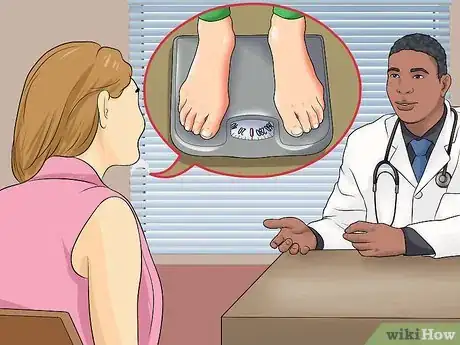
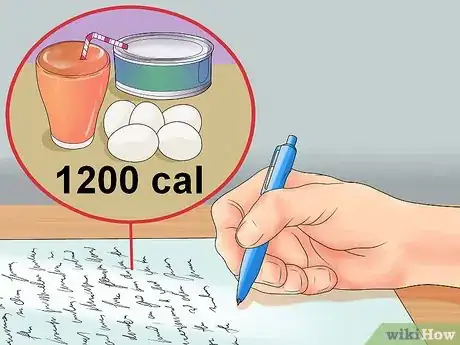
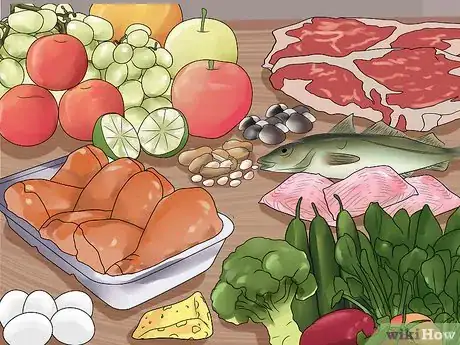
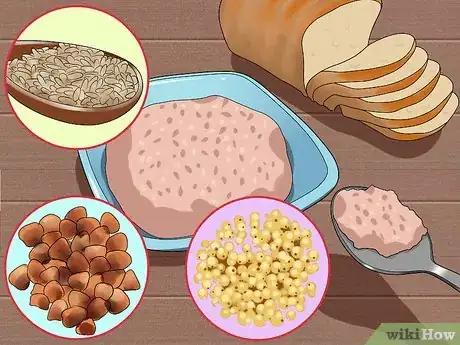
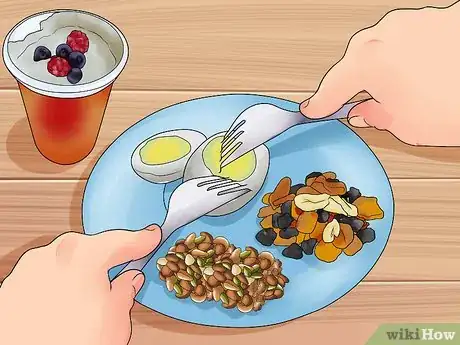


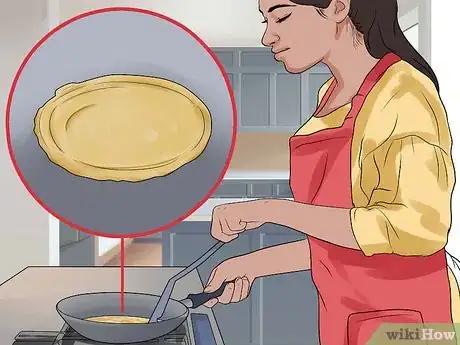
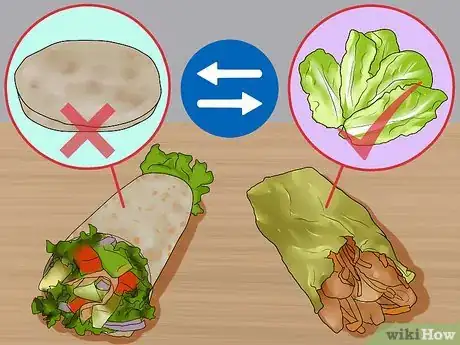
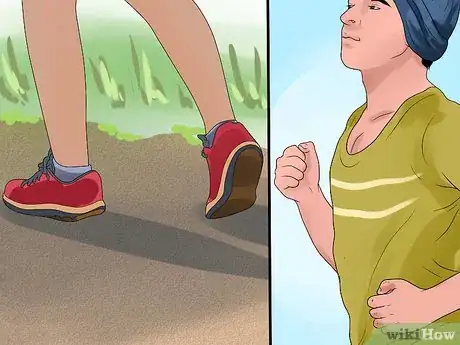
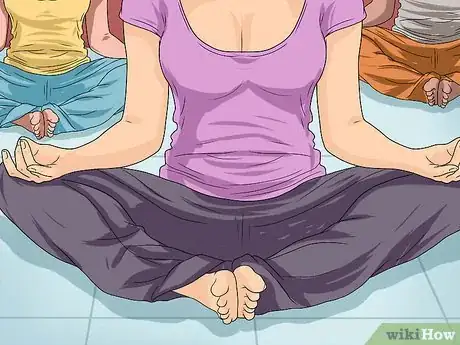
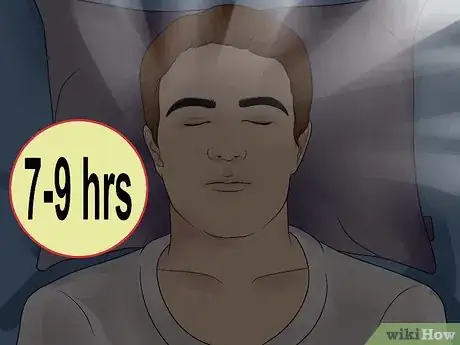


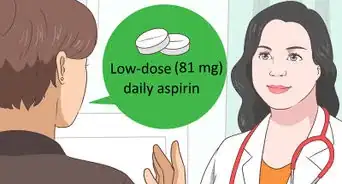
























































Medical Disclaimer
The content of this article is not intended to be a substitute for professional medical advice, examination, diagnosis, or treatment. You should always contact your doctor or other qualified healthcare professional before starting, changing, or stopping any kind of health treatment.
Read More...